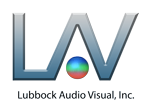
Old Lyme, CT 06371
United States
Sennheiser
Model: TeamConnect Bar S

Boulder, Colorado's Looking Glass Arts, a unique audio and video training experience for high school students founded by Mickey Houlihan and Rebecca Cueto use Sennheiser eH 150 headphones, ew 100 series wireless systems, and ME 66 shotgun mics to underscore the importance of audio in filmmaking.
BOULDER, COLORADO - AUGUST 2009: On the surface, the high school students who enroll in Boulder, Colorado's Looking Glass Arts are in for a three-week crash course in filmmaking and acting for film that will help them learn tools, techniques, and craft. Below that surface awaits an education in team building, finding one's voice, and creating something of meaning in a supportive environment that inspires new abilities and challenges worldviews. Cofounder Mickey Houlihan combines top-flight equipment, including Sony HVR-Z5U high-definition video cameras and Sennheiser microphones, headphones and wireless packages, with a teaching style that that purposefully melds technical skills, art, and philosophy. For many students, their short, but intense, experience at Looking Glass Arts is transformative.
Part of what inspired Houlihan to start the class with co-director Rebecca Cueto was a perceived decline in the medium he loves so dearly. "As the tools have become cheaper, I've watched one art form after another,"
Houlihan remarked. "Sound engineering is a great example - people used to devote their lives to understanding the tools and developing the sensitivities to capture just the right sound. Now anybody can record anything with his or her computer. I have a camera and I like to take pictures, but that doesn't make me a photographer. I feel that the arts play a critical role in our society, and the debasement of that scares me."
Three concurrent teams of students spend one week training on techniques and equipment, one week shooting, and a final week editing everything down to a seven-minute short. The course culminates in a screening party. "I like to think of the class as a mythic journey," enthused Houlihan. "Time and again, in culture after culture, the central story of transformation requires that you become the person that you are meant to be. You are called on to quest for something, to obtain it, and then to bring it back to the tribe on your own terms. Think of Luke Skywalker's transformation from farm boy to Jedi master and his mission to save the universe, and you'll know what I mean.
Here, instead of light sabers, we equip our students with HD cameras!"
Production values are important to Houlihan, and he emphasizes to students that the easiest way to tell the difference between an amateur's work and a true filmmaker's work is sound quality. Each of the three teams works with a Sennheiser ME 66 shotgun microphone at the end of a boom. The output from the microphone feeds a Sennheiser evolution SKP 100 G2 plug-on wireless transmitter. Both the boom operator and the director of photography monitor with Sennheiser ew 100 ENG receivers and Sennheiser eH 150 headphones. When a shotgun mic won't work, the crew has access to a Sennheiser ME 2 lavalier microphone with an SK 100 G2 transmitter. Because the ME 66 is powered by a Sennheiser K6 powering module and because the K6 can run on battery power, the students can use a fully wireless system.
"Getting good production sound is essential," said Houlihan. "There's no time in the schedule for ADR or Foley. And we're not on movie sets. There's lots of extraneous noise - cars, dogs, leaf blowers, airplanes, you name it.
The first few years we did the course, the boom operator didn't get a lot of respect. We've worked to change that by bringing in big name sound recordists who explain the art of their field and by underscoring the importance of good sound to the effectiveness of an entire film. It's good that we're working with Sennheiser, the same manufacturer used by the Hollywood studios."
Until recently, Looking Glass Arts didn't have Sennheiser wireless equipment and instead ran wires from the mic to the camera, and headphones from the camera to the boom operator. "People get distracted and wires get yanked,"
said Houlihan. "And with HD cameras on tripods, I was often nervous. Now, in addition to preventing our equipment from hitting the ground, the sound person is free to move however he or she needs to in order to get the best sound. That goes a long way toward making the airplane flying overhead fade far into the background. In addition, it's simple to scan for open frequencies so that our three crews, who are often working in close proximity, don't interfere with each other. Plus, I really need to thank Aaron Berg, Sennheiser's local sales person who was instrumental in making this all work for us. We are deeply appreciative of him and everyone at Sennheiser who has helped behind the scenes."
ABOUT SENNHEISER
Sennheiser is a world-leading manufacturer of microphones, headphones and wireless transmission systems. Established in 1945 in Wedemark, Germany, Sennheiser is now a global brand represented in 60 countries around the world with U.S. headquarters in Old Lyme, Connecticut. Sennheiser's pioneering excellence in technology has rewarded the company with numerous awards and accolades including an Emmy, a Grammy, and the Scientific and Engineering Award of the Academy of Motion Picture Arts and Sciences.

